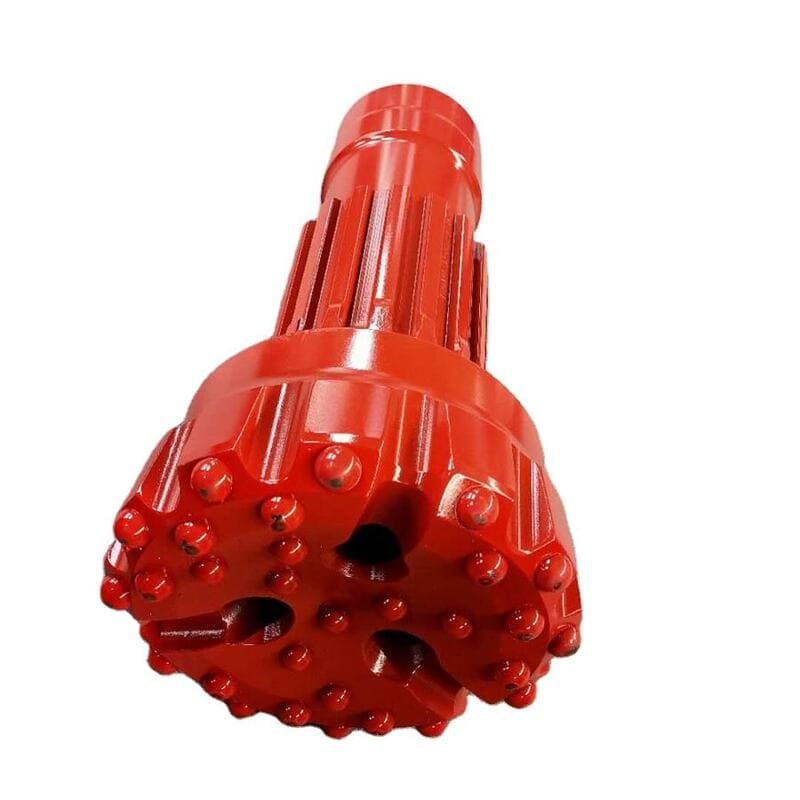Ever wondered how to tackle those stubborn rock formations with ease?
High-pressure DTH drill bits thrive in challenging environments like granite and basalt. These robust tools excel by using their high impact energy to effectively penetrate hard, abrasive rocks. This makes them perfect for dense geological structures, optimizing both drilling efficiency and equipment lifespan.
Imagine staring down at a massive granite outcrop, knowing you need to drill through it. It feels like you're about to go head-to-head with a concrete wall, right? That's where high-pressure DTH drill bits come in as your best ally. When faced with these daunting geological challenges, understanding how these bits operate can mean the difference between a successful project and a frustrating setback.
These bits aren't just about brute force; they're meticulously designed to handle the toughest rocks. From my experience, there's a sort of satisfaction in knowing your equipment won't just survive but thrive in such demanding conditions. Let’s delve into why these bits are crucial for tackling the most formidable rock types and how they’re engineered to do so.
High-pressure DTH bits excel in soft sedimentary rocks.False
They are optimized for hard, abrasive rocks like granite, not soft sediments.
High-pressure DTH bits increase drilling efficiency in hard rock.True
Their robust design and impact energy make them ideal for hard rock formations.
Why Do High-Pressure DTH Bits Excel in Hard Rock Formations?
Ever wondered why some drill bits can breeze through hard rocks like granite while others struggle?
High-pressure DTH bits excel in hard rock formations due to their ability to deliver high impact energy and penetration rates, making them ideal for dense, abrasive materials.
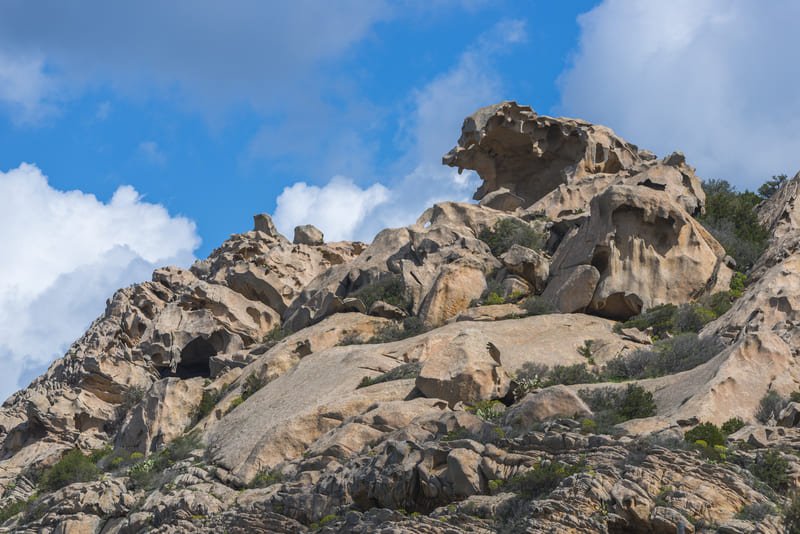
Understanding the Mechanics of High-Pressure DTH Bits
I remember my first encounter with high-pressure DTH (Down-the-Hole) bits during a particularly challenging project. Imagine this: standing amidst a daunting landscape of tough granite, trying to find the right tool for the job. It was then I discovered how these bits operate by delivering direct percussive force to the drill face, which was exactly what we needed. This mechanism shines in hard rock formations1, maintaining consistent drilling rates even when the going gets tough.
Key Features:
- Impact Energy: The sheer force these bits can exert is something to behold, breaking through hard materials like granite and quartzite with ease.
- Durability: Crafted from wear-resistant materials, these bits endure the abrasive nature of rocks like basalt, outlasting other tools in similar conditions.
Advantages in Different Rock Types
Reflecting on past projects, I often found myself wrestling with granite's stubborn hardness and quartzite's abrasive qualities. However, high-pressure DTH bits, with their robust construction, tackled these challenges head-on by maintaining high penetration rates.
| Rock Type | Challenges | DTH Bit Advantages |
|---|---|---|
| Granite | Abrasive, hard | High impact energy |
| Quartzite | Abrasive | Consistent penetration |
| Basalt | Dense | Durable construction |
Efficient in Complex Geological Structures
I've seen firsthand how high-pressure DTH bits make light work of complex geological structures, like fractured rock layers. Their design keeps hole integrity intact even as soft and hard layers alternate below the surface.
When it comes to drilling into the unknown depths for geothermal energy or mineral exploration, high-pressure DTH bits have been a game-changer. Their capability to efficiently drill through hard, hot rocks makes them an invaluable asset.
- Geothermal Exploration: I've witnessed the necessity of drilling into hard rock layers for geothermal energy, where these bits proved invaluable.
- Mineral Exploration: Maintaining performance at depth is crucial, making these bits a preferred choice for deep-earth explorations.
These advantages underscore why selecting high-pressure DTH bits for projects involving complex geological structures2 is so important. They offer durability, efficiency, and adaptability unmatched by other systems—a true ally in any drilling endeavor.
High-pressure DTH bits provide substantial impact energy.True
DTH bits deliver direct percussive force, crucial for hard rock drilling.
High-pressure DTH bits are ineffective in basalt formations.False
They excel in basalt due to their durability and impact energy.
How do DTH drill bits handle dense igneous and metamorphic rocks?
Imagine standing face-to-face with a massive granite wall, wondering how to break through. That's where DTH drill bits shine, crafted to take on the toughest geological giants.
DTH drill bits conquer dense igneous and metamorphic rocks by harnessing high-impact energy and durable materials. They're designed for peak performance, ensuring steady penetration rates in hard formations like granite and basalt while minimizing wear.

Understanding DTH Drill Bits
Ever faced the daunting task of drilling through rock so tough it feels like nature's version of concrete? That's when I turn to DTH drill bits. These specialized tools are like the heroes of the drilling world, built to take on whatever Mother Earth throws our way. Their magic lies in their composition and mechanism:
- Material Composition: Picture steel and tungsten carbide coming together like a power duo, designed to withstand harsh, abrasive rock.
- Impact Mechanism: Imagine a tiny jackhammer inside each bit, delivering powerful blows that help it punch through the toughest layers.
Performance in Igneous Rocks
Take granite and basalt—two rock types that can make drilling feel like chiseling away at an ancient stone monument. But with DTH drill bits, it's like having a secret weapon in my arsenal. These bits maintain consistent drilling efficiency3, making even the hardest tasks seem achievable:
| Rock Type | Challenges | DTH Bit Solution |
|---|---|---|
| Granite | Hardness, abrasiveness | High impact energy maintains penetration |
| Basalt | Density, toughness | Robust construction reduces wear |
Adapting to Metamorphic Rocks
Metamorphic rocks like gneiss and schist are like the wild cards of geology—each one brings its own set of surprises. Thankfully, DTH bits are adaptable:
- Dynamic Adjustment: It's like having a smart drill bit that senses resistance and tweaks its approach to suit the rock's temperament.
- High Wear Resistance: Thanks to their sturdy build, these bits last longer even under harsh conditions.
Advanced Design Features
The design evolution of DTH drill bits feels like stepping into the future:
- Flushing Systems: Imagine a vacuum cleaner that keeps the path clear, preventing jams.
- Multi-stage Cutting Edges: Like a Swiss Army knife for drilling, these edges enhance cutting efficiency in variable geological conditions4.
Economic Considerations
In terms of cost-effectiveness, it's a no-brainer for me. Using DTH drill bits means:
- Reduced Replacement Costs: They're built to last, so replacements are rare.
- Operational Efficiency: Faster penetration equals less time on site, saving costs.
Technical Insights from Experts
I've learned from industry experts that selecting the right bit is crucial. Understanding the geological landscape and matching it with the appropriate drill bit designs5 is key.
Industry Applications
In my work—whether it's mining, construction, or geothermal exploration—DTH drill bits are my go-to for projects demanding deep drilling solutions6. Their resilience under pressure makes them an indispensable tool in my kit.
DTH drill bits use tungsten carbide for durability.True
Tungsten carbide is used in DTH bits for its hardness and wear resistance.
Granite drilling requires low-impact energy from DTH bits.False
High-impact energy is needed to penetrate hard rocks like granite efficiently.
How Do Air Pressure Levels Affect Drilling Efficiency?
Ever thought a simple tweak in air pressure could transform your drilling efficiency?
Air pressure levels are pivotal in drilling efficiency, impacting penetration rates, drill bit longevity, and equipment performance. Optimizing air pressure can accelerate drilling, minimize wear, and reduce costs.
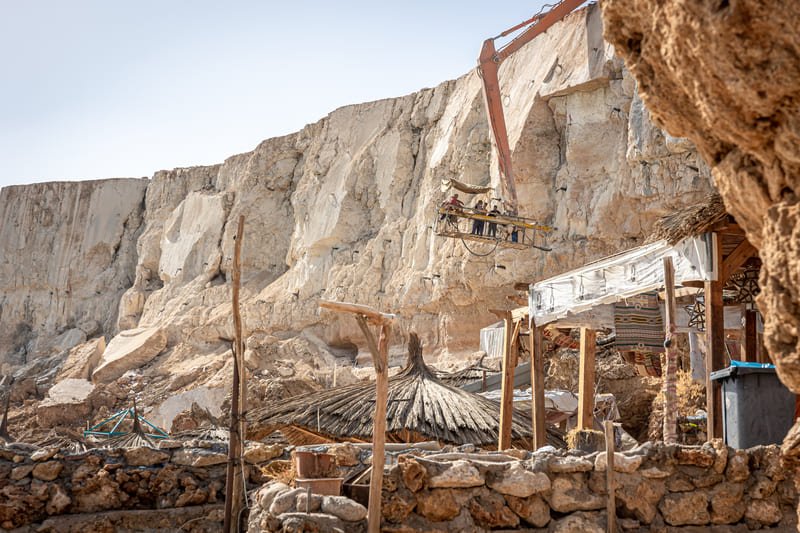
I remember the first time I realized the power of air pressure in drilling. It was during a project where we were up against some seriously stubborn granite. We kept hitting snags until someone suggested adjusting the air pressure. Suddenly, it was like we had unleashed a whole new level of power.
The Science Behind Air Pressure in Drilling
Air pressure is more than just a number on a gauge. It's the force that powers through rock, transferring energy directly to the drill bit. Higher pressures can smash through hard rock like granite with ease, while lower pressures might gently persuade softer materials to give way. Striking the right balance is crucial for optimizing efficiency7.
Practical Applications of Pressure Control
In real-world settings, the secret sauce lies in adapting air pressure to the terrain. Take granite or basalt, for instance; these tough cookies need a hefty punch of high-pressure energy to keep the pace up. Here's a handy guide I've often leaned on:
| Rock Type | Recommended Air Pressure (bar) |
|---|---|
| Granite | 25-35 |
| Basalt | 20-30 |
| Sandstone | 15-25 |
| Limestone | 10-20 |
Benefits of Optimal Air Pressure
Getting the air pressure just right does wonders for drill bit lifespan, sparing it from premature wear and tear. This not only saves money on replacements but also cuts downtime. Plus, it keeps compressors and other gear from overworking, which boosts their durability8.
Air Pressure and Equipment Compatibility
Matching air pressure with your equipment is like pairing fine wine with cheese—each brings out the best in the other. Different drilling systems have their own sweet spots; for example, a DTH (Down-the-Hole) hammer loves high pressure, whereas a top hammer drill might not need as much. Knowing these nuances helps maximize drilling productivity9.
By carefully adjusting and monitoring air pressure, you can dramatically improve your drilling operations. High-pressure systems thrive in certain environments, and understanding when to dial it up or down ensures you're using resources efficiently and keeping your gear in top shape.
Higher air pressure increases drill penetration rates.True
Higher pressures enhance energy transfer to the drill bit, improving penetration.
Lower air pressure is preferred for granite drilling.False
Granite requires higher air pressure due to its hardness, not lower.
Can High-Pressure DTH Bits Penetrate Highly Consolidated Sediments?
Have you ever wondered if those sturdy high-pressure DTH bits can really crack through those tough, rock-solid sediments? Let me share what I found out.
Absolutely, high-pressure DTH bits are up to the challenge of penetrating highly consolidated sediments. Their strong build, use of advanced materials, and ability to transfer energy efficiently make them ideal for breaking through dense formations.
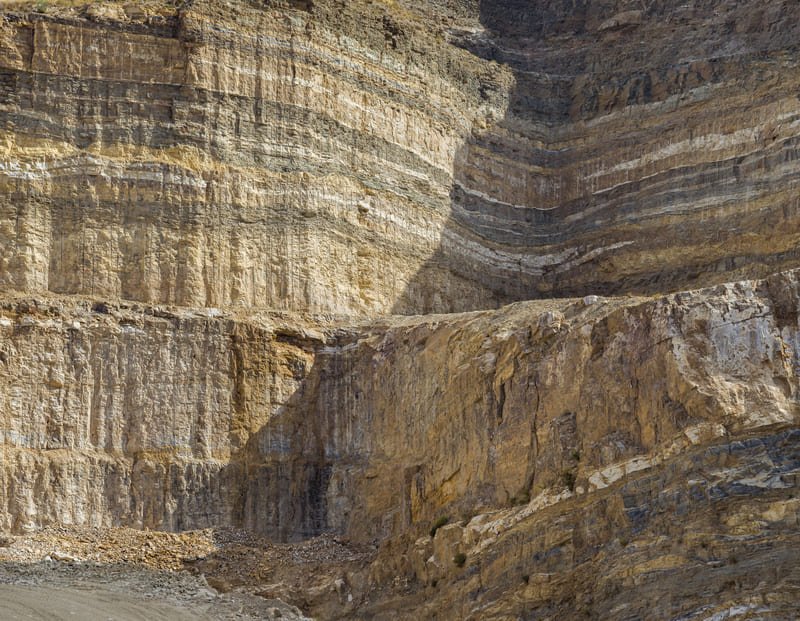
Understanding Highly Consolidated Sediments
Imagine you're trying to dig through a rock-hard cake of cemented particles—that's what highly consolidated sediments are like. They're geological formations where everything is packed tightly together, as if nature decided to play its own version of Tetris. Conglomerates, breccias, and some sandstones are classic examples. And just like that stubborn cake, these formations aren't easily crumbled with standard tools.
High-Pressure DTH Bits and Their Mechanism
So here's the scoop on high-pressure Down-the-Hole (DTH) bits: they're like the superheroes of drilling—designed for the toughest battles. These bits deliver powerful percussive force directly where it's needed, like a tiny jackhammer going to work. Operating at air pressures between 10 and 35 bar, they slam through those stubborn sediments with impressive efficiency. And thanks to their rugged construction and top-notch materials, they stand up to abrasive conditions without batting an eye.
Key Features Enabling Penetration
| Feature | Description | Benefit |
|---|---|---|
| Impact Energy | High-pressure air drives a piston that delivers powerful impacts. | Efficient penetration of hard sediments. |
| Durable Materials | Made from high-grade steel and tungsten carbide. | Enhanced resistance to wear and tear. |
| Design | Optimized for energy transfer and debris removal. | Maintains drilling efficiency in dense formations. |
Applications in Different Geological Conditions
It's not just about breaking through tough sediments—high-pressure DTH bits shine in a variety of geological settings. Whether it's the harshness of granite or the abrasiveness of quartzite, these bits adapt beautifully. They're the go-to choice for mining operations, geothermal exploration, and even some construction projects.
For a deep dive into hard rock drilling applications10 or handling abrasive materials11, these bits offer consistent performance across diverse scenarios.
Let's not forget about deep drilling projects. Whether tapping into geothermal energy or reaching for minerals deep in the earth's crust, these bits maintain their performance admirably across different layers of rock. Curious about what's needed for deep drilling12? These tools are truly essential in tackling some of the most demanding geological challenges we face today.
High-pressure DTH bits can penetrate conglomerates.True
High-pressure DTH bits are designed to penetrate dense formations like conglomerates.
Standard drills outperform DTH bits in dense sediments.False
Standard drills struggle with dense sediments, unlike high-pressure DTH bits.
How Do High-Pressure DTH Bits Handle Abrasive Materials?
Ever wondered how high-pressure DTH bits tackle the toughest materials?
High-pressure DTH bits effectively manage abrasive materials by employing durable materials, innovative designs, and optimized air pressure systems to enhance drilling efficiency while reducing wear.
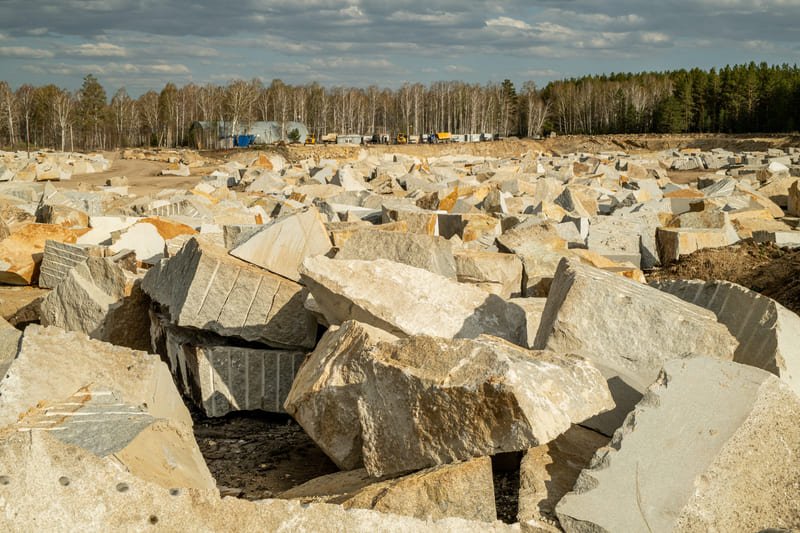
Understanding Abrasive Materials
Imagine staring at a massive wall of granite, knowing you have to drill through it. That's the challenge abrasive materials like granite and quartzite present—they wear down drill bits rapidly. But high-pressure DTH bits are up for the task, specially designed to power through these rugged conditions.
Material Composition and Design
If you've ever felt the weight of high-grade steel or the cool hardness of tungsten carbide, you'll understand why these materials are chosen for DTH bits. I remember watching a demonstration once—seeing the strategic placement of tungsten carbide buttons on a bit. It was like an artist carefully placing brush strokes to create a masterpiece, each button designed to distribute impact evenly and reduce wear.
| Material | Properties |
|---|---|
| Tungsten Carbide | High hardness, wear resistance |
| Steel | Toughness, flexibility |
For those curious about tungsten carbide properties13, diving deeper into its role can be fascinating.
Air Pressure Optimization
Operating these bits at pressures between 10 and 35 bar is like giving a bit a turbo boost. I once had an engineer explain to me how this increased pressure delivers more impact energy directly to the rock surface, which keeps the drilling smooth and efficient, even when faced with abrasive conditions.
Advanced Engineering Techniques
The magic of advanced engineering lies in the details—like how the bit face design channels cuttings away efficiently, minimizing secondary abrasion. It's akin to a dance, where every move is calculated to prevent clogging and wear. Improved flushing systems are like expert cleanup crews, ensuring everything stays clear and functional.
Real-World Applications
In my experience working with mining operations, high-pressure DTH bits are like unsung heroes in abrasive environments. Their blend of cutting-edge engineering and material science ensures they stay reliable and long-lasting, even in the most challenging terrains.
To explore how these tools are transforming industry practices in mining applications14, it's worth seeing these bits in action. The innovations behind high-pressure DTH bits truly make them indispensable for efficiently managing abrasive materials.
High-pressure DTH bits use tungsten carbide for durability.True
Tungsten carbide is known for its hardness and wear resistance, making it ideal for DTH bits.
DTH bits operate at pressures below 5 bar in abrasive conditions.False
DTH systems typically operate between 10 and 35 bar to handle hard surfaces.
Why Choose DTH Drill Bits for Complex Geological Challenges?
Let's explore how DTH drill bits are game-changers in complex geological landscapes, offering unparalleled efficiency and versatility.
DTH (Down-the-Hole) drill bits are essential for navigating complex geological structures, thanks to their ability to achieve high penetration rates, ensure hole integrity, and adapt to various rock hardness levels. This makes them perfect for deep drilling and handling fractured rock formations efficiently.
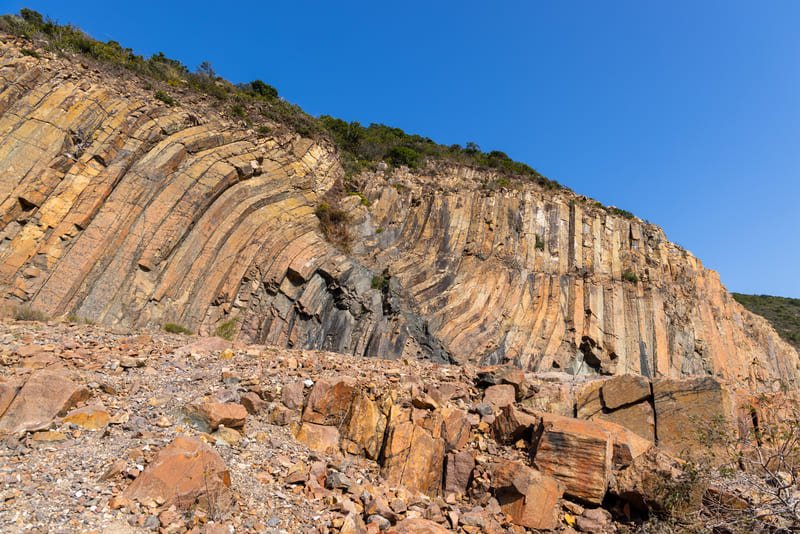
Superior Penetration Rates
You know those moments when you're stuck in a task that just seems impossible? Well, that's how it often feels when tackling tough rock formations like granite or basalt. But DTH drill bits come to the rescue with their high-impact energy, making the job faster and less daunting. Imagine working on an oil exploration project15 where you're facing layers of basalt—these drill bits cut through like a hot knife through butter, saving precious time.
Maintaining Hole Integrity
Maintaining stability in fractured rock layers feels like walking on a tightrope sometimes. But with DTH drill bits, the design ensures your work doesn't go off course. I remember a geothermal project16 where every inch of well integrity was crucial—DTH bits handled the pressure beautifully, ensuring successful energy extraction.
Adaptability to Varied Rock Hardness
The best part about DTH drill bits is their adaptability. It's like having a Swiss Army knife that works on everything from soft sedimentary to hard metamorphic rocks. This means fewer bit changes and more time getting the job done, which is a lifesaver during mining operations with mixed rock layers.
| Rock Type | Challenge | DTH Solution |
|---|---|---|
| Soft Sedimentary | Frequent bit changes | Seamless adaptability for uninterrupted progress |
| Hard Metamorphic | High hardness | High impact energy for efficient penetration |
| Mixed Layers | Variable strata | Minimized operational downtime |
Enhanced Performance in Deep Drilling
DTH technology shines in deep drilling scenarios. It consistently delivers at great depths, making it indispensable in mineral exploration17 projects where you might find yourself drilling kilometers beneath the earth. I’ve seen how this technology can make a seemingly insurmountable task much more manageable.
Resistance to Abrasive Wear
Dealing with rocks high in silica content is like wearing out your favorite shoes too fast. But DTH drill bits are crafted from durable materials that stand up to the challenge, extending their lifespan and reducing replacements. In abrasive regions, this durability keeps projects within budget and on schedule.
Choosing DTH drill bits not only streamlines operations but also reduces costs by minimizing tool wear and energy consumption—an absolute must for budget-conscious projects.
DTH drill bits reduce drilling time in basalt.True
Their high-impact energy delivers faster penetration rates, crucial for efficiency.
DTH drill bits are ineffective in maintaining hole integrity.False
They are designed to navigate fractured layers without compromising stability.
Conclusion
High-pressure DTH drill bits excel in penetrating hard, abrasive rocks like granite and basalt, optimizing drilling efficiency and equipment lifespan through robust design and high impact energy.
-
Learn about the mechanics of DTH drill bits and how they effectively penetrate hard rock formations. ↩
-
Discover why DTH bits are ideal for drilling through complex geological formations and maintaining hole integrity. ↩
-
This link provides insights into maintaining efficiency when drilling tough formations. ↩
-
Exploring this helps understand how different conditions impact drilling success. ↩
-
Choosing the right bit ensures optimal performance and cost-efficiency. ↩
-
Discover why these bits are ideal for demanding drilling applications. ↩
-
Explore how varying air pressures can be optimized for different geological conditions. ↩
-
Learn about the advantages of maintaining optimal air pressure for drill longevity and performance. ↩
-
Find out how matching air pressure with equipment specifications enhances drilling productivity. ↩
-
Explore how high-pressure DTH bits perform in hard rock applications like granite and basalt. ↩
-
Understand the effectiveness of DTH bits in handling abrasive materials such as silica-rich rocks. ↩
-
Learn about the role of high-pressure DTH bits in deep drilling projects like geothermal and mineral exploration. ↩
-
Discover the essential properties of tungsten carbide that contribute to its effectiveness in resisting wear during drilling. ↩
-
Explore how DTH bits are utilized in mining, ensuring effective performance even in highly abrasive conditions. ↩
-
Explore how DTH drill bits enhance efficiency by delivering high-impact energy, crucial for deep oil exploration. ↩
-
Learn about the critical role of well integrity in geothermal projects and how DTH bits support this need. ↩
-
Understand why DTH drill bits are preferred for deep mineral exploration due to their consistent performance. ↩

